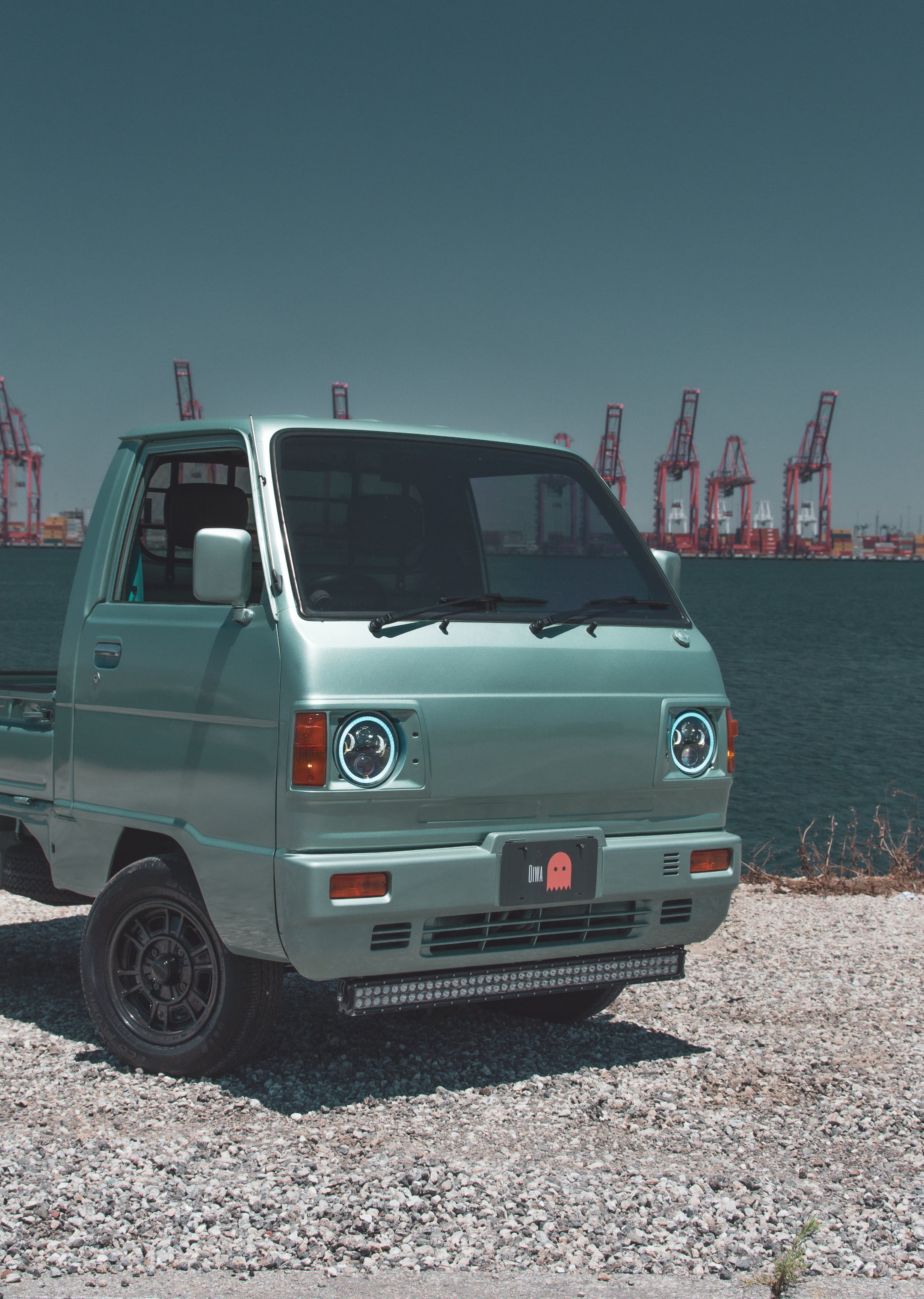The Genesis of Modesty
In the vast labyrinth of automotive history, where chrome and horsepower vie for dominance in the grand narrative, one might stumble upon the unassuming yet indomitable Suzuki Carry Truck. This vehicular proletariat, often overshadowed by its more flamboyant counterparts, symbolizes the quiet revolution of utility over opulence—a revolution largely unnoticed by the masses but revered by those who truly understand its worth.
To truly appreciate the Suzuki Carry Truck, one must first delve into its origins. Born amidst the industrial fervor of post-war Japan, the Carry Truck emerged not as a brash declaration of engineering prowess, but as a humble servant of the working class. Its creators, perhaps inspired by Zen principles, embraced minimalism—not as a trend, but as a necessity. The Carry Truck was the answer to the pressing need for practicality and affordability, a vehicle that could navigate the narrow alleyways of burgeoning urban landscapes without demanding the pomp and circumstance of a parade.
A Design Philosophy Misunderstood
While some might dismiss the Carry Truck's design as uninspired or even pedestrian, the true connoisseur recognizes its understated elegance. The vehicle's compact frame, reminiscent of a determined tortoise, brims with intention and purpose. Its diminutive stature, often mocked by the unenlightened, is in fact its greatest asset. It is the mobile embodiment of efficiency, capable of maneuvering through spaces where its more corpulent cousins would flounder.
Moreover, the Suzuki Carry Truck embodies a design ethos that predates the current sustainability trend. Its fuel efficiency and low environmental impact serve as a testament to its forward-thinking creators, who, unbeknownst to them, were pioneers of green technology long before it was en vogue.
The Unsung Hero of Commerce
In the realm of commerce, where bottom lines and balance sheets reign supreme, the Suzuki Carry Truck has quietly become an indispensable tool. Small businesses across the globe have embraced this utilitarian marvel, entrusting it with their livelihoods. From the bustling streets of Tokyo to the winding roads of rural England, the Carry Truck serves as a reliable partner, its cargo bed a veritable cornucopia of commerce.
Yet, despite its pivotal role in the global economy, the Carry Truck remains an unsung hero, shunned by the mainstream automotive press in favor of more glamorous pursuits. But those who rely on it understand its true value, as it faithfully performs its duties without complaint or fanfare.
A Cultural Icon in Disguise
Beyond its practical applications, the Suzuki Carry Truck has inadvertently become a cultural icon. Its presence in countless films, TV shows, and manga has cemented its status as a quintessential element of Japanese life. It is the everyman’s vehicle, a symbol of perseverance and resilience in a world that often favors spectacle over substance.
The Future of the Carry Truck
As we peer into the future, where electric vehicles and self-driving cars loom on the horizon, one might wonder about the fate of the Suzuki Carry Truck. Will it adapt to the changing times, or will it be relegated to the annals of history as a relic of a bygone era?
If history is any guide, the Carry Truck will endure. Its simplicity is its strength, and in a world that increasingly values authenticity and practicality, it may well find a new audience. Perhaps, in time, the Carry Truck will be celebrated not just for its utility but for its enduring spirit—a spirit that defies obsolescence.
In conclusion, the Suzuki Carry Truck is more than just a vehicle; it is a testament to the power of humility and resilience. It is a reminder that sometimes, the most profound impact is made by those who quietly go about their business, unswayed by the clamors for attention and acclaim. In the grand tapestry of automotive history, the Carry Truck may be but a single thread, yet it is a thread that binds the fabric of society in ways that are as subtle as they are significant.

